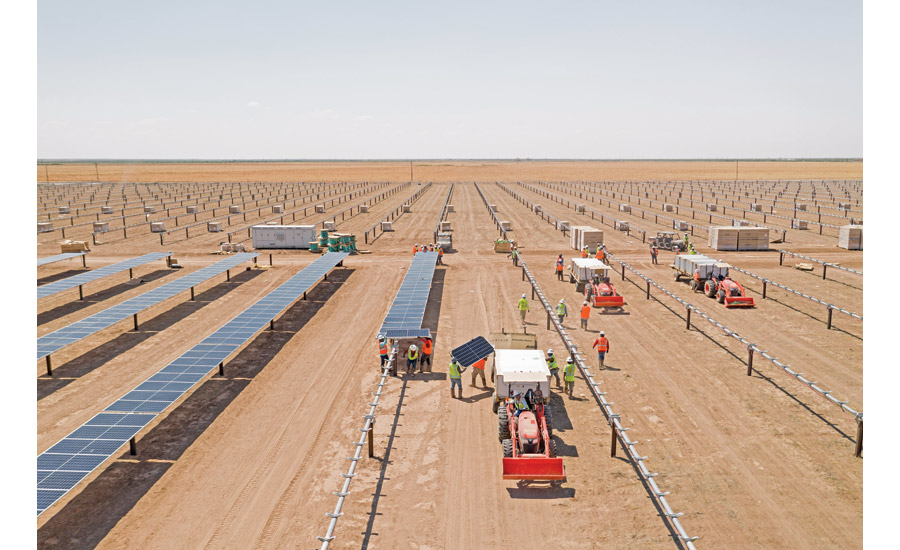Clean-energy advocates, construction groups and labor unions, not always on the same side in policy issues, are watching closely as White House and US Senate negotiators try to strike a deal on a $1.2-trillion bipartisan infrastructure package before the August congressional recess.
One element of the discussions of particular interest to the groups is an energy infrastructure bill crafted by Sen. Joe Manchin (D-W.Va.), chairman of the key Energy and Natural Resources Committee. His measure cleared the committee by a 13-7 vote on July 14 and is expected to be folded into the larger infrastructure package, if negotiators strike a deal.
Manchin’s bill would boost spending for decarbonization technologies such as carbon capture and sequestration (CCS), and manufacture of “blue” hydrogen that is produced with natural gas using CCS to serve as an alternative to natural gas or other fossil fuels. A key sticking point for opponents is the bill’s cost. Wyoming Sen. John Barrasso, the energy committee’s top Republican, said before the vote that he could not support the bill in its present form because of its $95-billion pricetag. “It is unclear how the majority is going to pay for this spending,” Barrasso said.
As a more conservative Democrat, Manchin has been a key player in discussions among lawmakers and with the White House on the infrastructure package. His bill would authorize more than $12 billion for carbon-capture technologies, including direct air capture and demonstration projects, and $9.5 billion for hydrogen programs or projects, including $8 billion for regional “hubs” such as the Ohio River Valley. That area includes portions of West Virginia, where the economy has faltered as the nation continues to shift away from fossil fuels.
Manchin’s bill, which administration officials have said dovetails with Biden’s $2-trillion American Jobs Plan, would provide work for construction firms. Brian Turmail, a spokesperson for the Associated General Contractors of America, says,“There will be a need for new hydrogen-friendly infrastructure, which our members will presumably be constructing, [and] carbon capture involves developing technology to capture CO2 at its source and converting spent fossil-fuel reservoirs into carbon storage and building new storage facilities.”
Speaking at a July 12 webinar on revitalizing the Ohio River Valley, Richard Trumka, president of the AFL-CIO, said, “Working people have suffered a long-term hollowing out of our country’s industrial base.” He noted that investing in decarbonization technologies like hydrogen and CCS would allow climate goals to be met “without destroying livelihoods and lives,” and that the revitalization of old Rust Belt regions “could show the country that addressing the climate crisis doesn’t have to cost American jobs; it can create them.”
Gina McCarthy, White House Climate Adviser, said on the same webinar that the Biden administration “is not interested in moving forward with a climate strategy that isn’t about creating good union jobs.”
Across the political spectrum, CCS and hydrogen use and production are widely – although not universally – recognized as important bridge technologies for a transition to a more climate-friendly economy. But concerns about their scalability and costs have persisted. McCarthy said federal investment in regional hubs would send a signal to the private sector about the commercial viability of those technologies and others.
Labor unions have sometimes been at odds with environmental advocates. The Laborers’ International Union of North America worked alongside AGC and other groups to champion construction of the final portion of the now-cancelled Keystone pipeline. Some union leaders have been blunt about noting that jobs in solar and wind pay less and involve fewer workers than major fossil-fuel projects.
Decarbonization through carbon capture and blue hydrogen could allow workers to continue to find work that pays well, Trumka said.
Dan Lashoff, U.S. director of the World Resources Institute, thinks compensation metrics for renewable-energy construction jobs will change over time. “There’s no reason why a wind technician job or a solar electrician job shouldn’t pay as well as the existing jobs in the fossil-fuel energy industry.” he says. ‘They don’t pay as well now, but that’s certainly an issue that the Biden administration is paying a lot of attention to, and research shows that if you pay higher wages, you wouldn’t actually slow the transition” to a clean-energy economy.
Lashoff says CCS and hydrogen, particularly hydrogen produced through converting biomass to fuel in a net-zero emissions process, can play a role in transitioning the U.S. to cleaner energy






Post a comment to this article
Report Abusive Comment